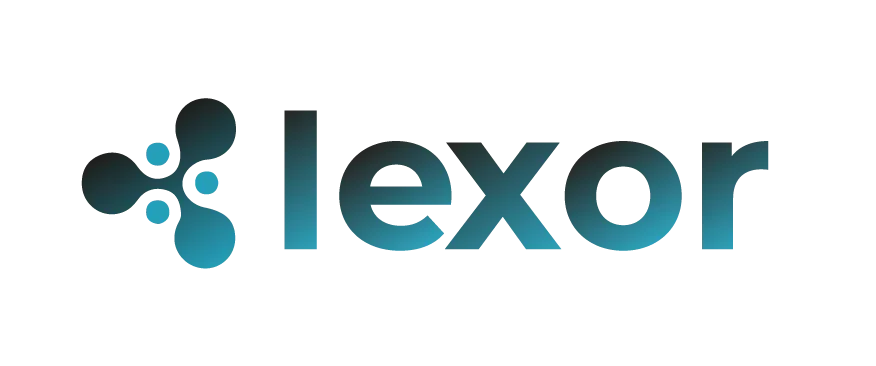How Blockchain Works in Real Life: Use Cases

The phrase “blockchain works in real life” often conjures images of Bitcoin and NFTs, but its real-world applications stretch far beyond digital assets.
This decentralized ledger technology is quietly revolutionizing industries by enhancing transparency, security, and efficiency in ways that were once unimaginable.
From ensuring the authenticity of luxury goods to securing medical records, blockchain’s impact is both profound and practical.
Despite its association with complex cryptography, blockchain’s true power lies in its simplicity—a tamper-proof, distributed database that eliminates the need for intermediaries.
Whether tracking the origin of conflict-free diamonds or enabling refugees to reclaim digital identities, blockchain works in real life by solving tangible problems with real human consequences.
A 2024 Deloitte report revealed that 55% of global enterprises now integrate blockchain for supply chain traceability, while Juniper Research estimates that banks will save $27 billion annually by 2025 through blockchain-based settlements.
These numbers aren’t speculative—they reflect an accelerating shift toward decentralized solutions.
But how exactly does this technology transition from whitepapers to real-world utility? Let’s explore the most compelling use cases where blockchain isn’t just a buzzword but a functional tool reshaping society.
1. Supply Chain Transparency: From Farm to Table
The Problem: Opacity in Global Trade
Modern supply chains are notoriously opaque. A consumer buying coffee has no way to verify if farmers were paid fairly or if the beans were grown sustainably. Fraud, inefficiency, and ethical concerns plague industries ranging from agriculture to luxury goods.
The Blockchain Solution
By recording every step of a product’s journey on an immutable ledger, blockchain ensures full traceability.
For example, IBM’s Food Trust network allows Walmart to track mango shipments from Mexico to U.S. stores in seconds—a process that previously took days.
Each stakeholder (farmers, transporters, retailers) updates the ledger, creating an unforgeable history.
Real-World Impact
In 2023, Nestlé used blockchain to trace milk sources in New Zealand, ensuring compliance with child labor laws. Similarly, De Beers’ Tracr platform certifies diamond origins, reducing the sale of conflict minerals.
++The Pros and Cons of Tablets in Preschool Education
These aren’t theoretical pilots—they’re active systems proving blockchain works in real life by merging accountability with commerce.
2. Decentralized Finance (DeFi): Banking the Unbanked
The Problem: Financial Exclusion
Nearly 1.4 billion adults lack access to basic banking services (World Bank, 2023). Traditional systems exclude them due to high fees, documentation barriers, or institutional distrust.
The Blockchain Solution
DeFi platforms like Aave and MakerDAO enable peer-to-peer lending, savings, and insurance without intermediaries.
A farmer in Kenya can now collateralize crypto assets to secure a loan, bypassing predatory lenders. Smart contracts automate agreements, eliminating human bias.
Real-World Impact
In Nigeria, where inflation erodes savings, citizens increasingly turn to stablecoins like USDC.
++The Pros and Cons of Blockchain Technology
The Central African Republic even adopted Bitcoin as legal tender in 2022—a controversial but bold experiment in monetary sovereignty.
While risks exist, these cases demonstrate how blockchain works in real life to democratize finance.
3. Healthcare: Securing Sensitive Data

The Problem: Fragmented Medical Records
Hospitals, insurers, and pharmacies store patient data in siloed systems. Breaches expose millions annually (over 40 million records in 2024 alone, per HIPAA Journal).
The Blockchain Solution
Encrypted, patient-controlled health records on blockchain allow secure sharing.
++How to Start Mining Cryptocurrency: A Comprehensive Beginner’s Guide
Estonia’s e-Health system, operational since 2012, uses this model. Doctors access histories only with consent, reducing errors and fraud.
Real-World Impact
During the 2023 pandemic, Ghana deployed blockchain to verify vaccine authenticity. Patients scanned QR codes to confirm doses weren’t counterfeit—a literal lifesaver in regions plagued by fake medicines.
4. Voting Systems: Combating Electoral Fraud
The Problem: Trust in Democracy
Voter suppression, miscounts, and hacking allegations undermine elections. Paper trails are slow; digital systems are vulnerable.
The Blockchain Solution
Pilot programs (e.g., Switzerland’s Zug, West Virginia in 2018) let voters cast tamper-proof ballots via blockchain. Each vote is anonymized yet auditable, ensuring integrity without sacrificing privacy.
Real-World Impact
While not yet mainstream, these trials prove blockchain works in real life to restore faith in governance. The challenge? Balancing transparency with accessibility for non-tech-savvy citizens.
5. Intellectual Property: Protecting Creators
The Problem: Piracy and Royalty Theft
Musicians, artists, and writers lose billions yearly to unauthorized use. Traditional copyright systems are slow and expensive.
The Blockchain Solution
NFTs (beyond JPEGs) can encode ownership rights. Platforms like Audius pay artists instantly via smart contracts. A DJ’s streamed track triggers an automatic micropayment—no label middlemen.
Real-World Impact
In 2024, the EU tested blockchain for patent filings, slashing processing time from months to hours. For indie creators, this is revolutionary.
Challenges Ahead: Scalability and Regulation
Blockchain isn’t a panacea. Energy consumption (though improving with Proof-of-Stake), scalability bottlenecks (Ethereum’s rollups help), and regulatory uncertainty (see the 2025 MiCA laws in Europe) remain hurdles.
Yet, as these examples show, the technology’s adaptability ensures its staying power.
For deeper dives, explore:
Conclusion: A Tool, Not a Trend
Blockchain’s value isn’t in its complexity but its utility. From ensuring a diamond’s ethical origins to giving the unbanked financial agency, blockchain works in real life by bridging trust gaps in systems we rely on daily. The question isn’t “if” it will become ubiquitous—it’s “how soon.”
Frequently Asked Questions (FAQs)
Q: Is blockchain only useful for cryptocurrencies?
A: No. While Bitcoin popularized it, blockchain’s applications span supply chains, healthcare, voting, and more—anywhere trust and transparency are critical.
Q: How does blockchain improve supply chains?
A: By immutably recording each step (e.g., harvest, shipment, sale), it prevents fraud and ensures ethical sourcing, as seen with Nestlé’s milk tracking.
Q: Are blockchain transactions truly irreversible?
A: Yes. Once validated, entries can’t be altered—a double-edged sword that prevents fraud but requires careful input (no “undo” button).
Q: What’s the biggest barrier to blockchain adoption?
A: Scalability. Networks like Ethereum process ~15-30 transactions/second (vs. Visa’s 24,000), though layer-2 solutions (e.g., Arbitrum) are addressing this.
Q: Can blockchain be hacked?
A: The ledger itself is nearly unhackable due to decentralization, but exchanges and wallets remain targets (e.g., the 2023 Coinbase breach).
